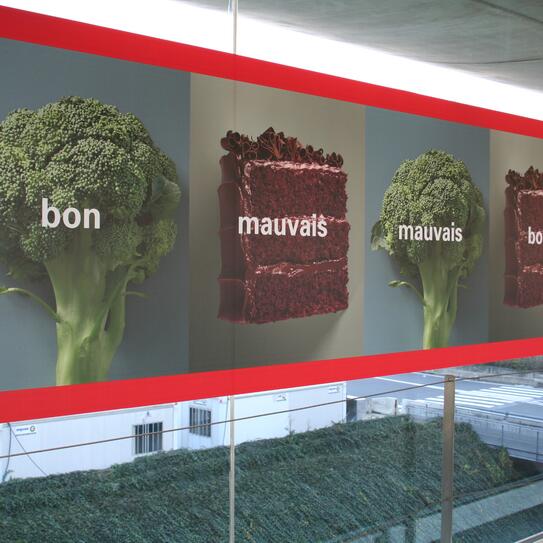If you are an international traveler, you’ve probably noticed HSBC’s advertising in jet bridges, baggage claim areas, and pretty much everywhere else in over 45 airports around the world. What makes this global campaign truly distinctive is the brilliant implementation of a “glocalized” strategy–keeping a consistent execution across multiple countries, while maintaining a local flavor in its message at each airport.
Images of Macchu Picchu in Peru, soccer in Spain, renaissance sculptures in Italy, beauty queens in Venezuela, French delicacies in Paris, chili peppers in Mexico, and Mehndi art in India welcome travelers from around the world, with an colorful take on local culture and values.
HSBC’s campaign exemplifies how marketing in the financial services sector has come a long way: from assuming that banks are beyond branding to a phase where banks are using branding strategically (think Bank of America, TD Bank, Chase, and most recently the Bank of New Zealand). The economic climate in recent years has taught financial institutions that strong brand equity is becoming more important than ever before.
Although the company is headquartered in the UK, it has a strong Asian heritage, and in the past several years it has taken up a strategy of global retail and wealth management. Branding plays an important role here: HSBC continues to unify how it presents its brand across markets, while maintaining a message of local specialization and specific cultural understanding. This is likely to continue as part of the bank’s strategy to reinforce its business in emerging markets.
In the words of Maitri Kumar, Head of Marketing, HSBC India:
HSBC showed immense strength when other brands in the banking arena, across the globe, faced a real hard time to keep up their image during the global meltdown in 2008. And we believe our slogan, ‘The world’s local bank,’ played a very critical role in the same. HSBC’s global expertise coupled with local relevance finds expression in that tagline.
The driving focus of HSBC’s communications is backed by the strong consumer insight that a large, global bank is intimidating for most consumers, who associate the footprint and size of the bank with a negative experience and condescending treatment.
The bank’s conceptual response to this insight is a classic example of “glocalizing” — a concept that even many consumer goods companies struggle to grasp. Through its “The World’s Local Bank” advertising campaign, HSBC strives to set itself apart as a bank that, while having many global connections, is still flexible enough to care for the needs of local customers in the ways they prefer.
HSBC’s executes its strategy not only through marketing and advertising, but also by offering a customer experience that lives up to the brand expectation. An example of the brand in action is a recently launched product, HSBC Premier, that allows customers to open accounts in 37 countries and get assistance regardless of location.
Global brands that find value in appealing to local customers can learn a lesson from this glocalized execution. HSBC starts with a strong brand positioning that cascades into local markets through tweaks in communication. It then backs up the promise of the “World’s Local Bank” with products and features that leverage its international footprint matched with a familiar and approachable customer experience. Sounds like a winning formula.
